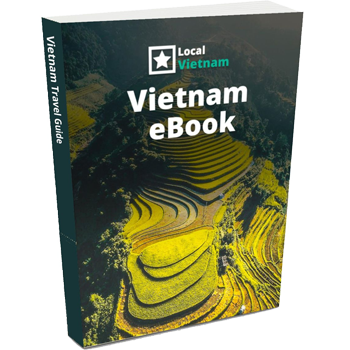What is An Dinh Palace?
An Dinh Palace is a former royal residence from the Nguyen Dynasty, built in the early 20th century as a private home for Crown Prince Bao Dai, who would later become Vietnam’s last emperor. Unlike the grand scale of Hue’s Imperial City, this palace is smaller and more intimate, offering a quieter, more personal glimpse into royal life.
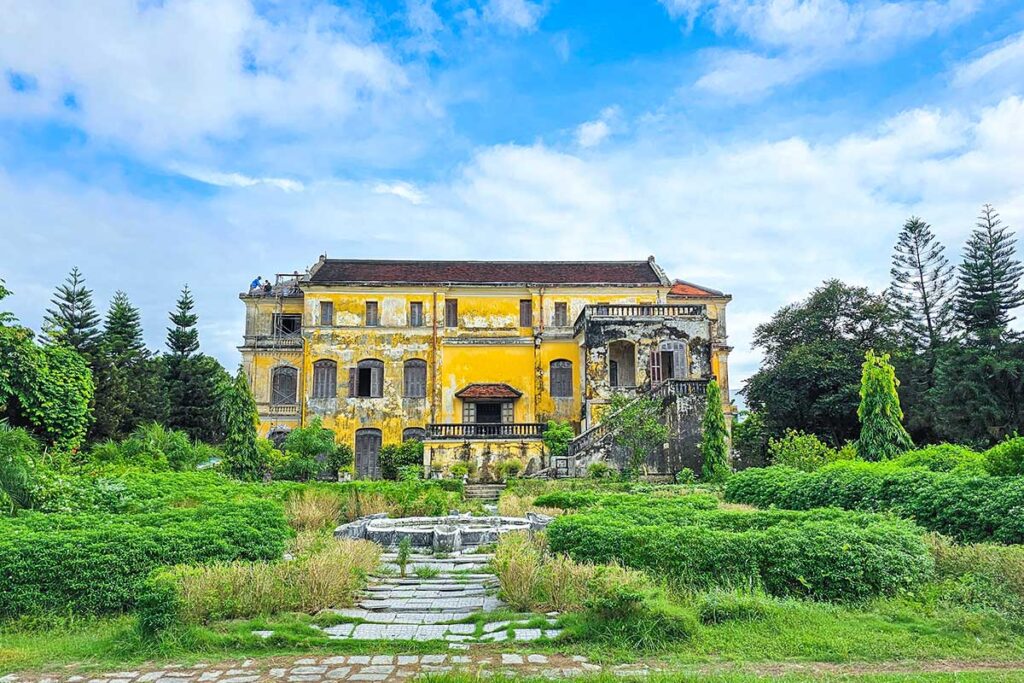
What sets An Dinh apart is its European-inspired design, featuring Baroque-style architecture, colorful murals, and ornate interiors—a rare contrast to the traditional Vietnamese palaces found elsewhere in Hue. The building reflects a blend of French and German artistic influences, combined with Vietnamese symbolism, all set within a peaceful walled courtyard.
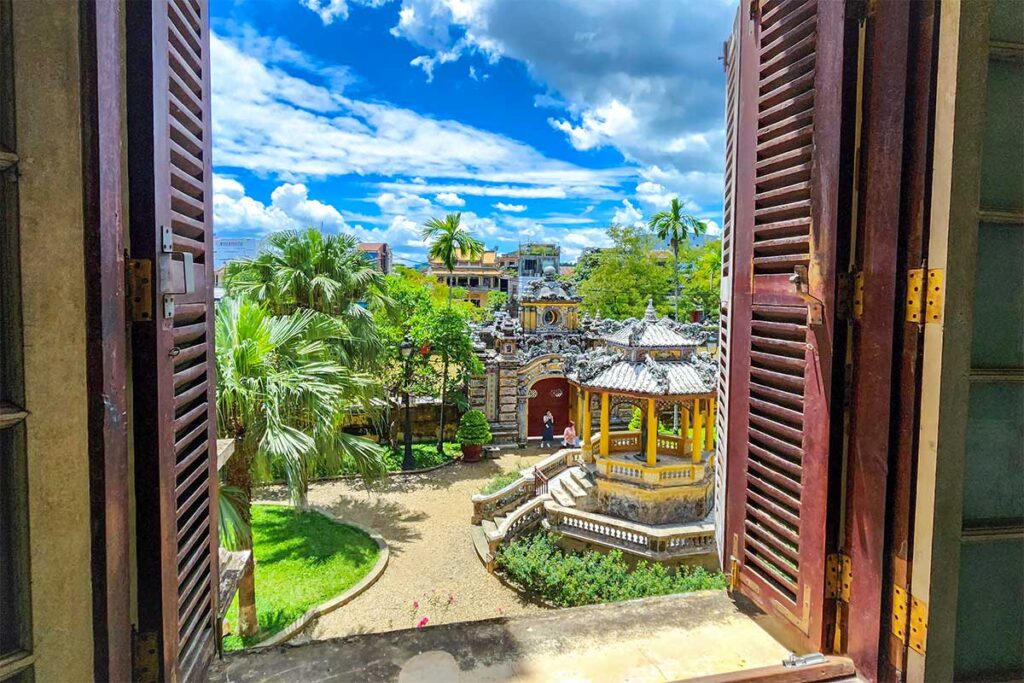
Today, only part of the original complex remains, but what’s been restored is open to the public as a heritage site and small museum, giving travelers a unique look at the lifestyle and aesthetics of Vietnam’s fading monarchy.
History of An Dinh Palace
An Dinh Palace was built in 1917 by Emperor Khai Dinh as a gift to his son Prince Nguyen Phuc Vinh Thuy, who would later become Emperor Bao Dai, the last ruler of Vietnam’s Nguyen Dynasty. At the time, it was a luxurious and expansive private residence, part of a larger complex that included more than ten buildings, gardens, and service quarters.
After Bao Dai’s abdication in 1945, the palace became the residence of his mother, Queen Mother Tu Cung, who lived there for many years. The property endured through the political upheavals and wars of the 20th century, but many of its buildings were damaged or lost over time.
In 2002, a major restoration project began with support from the German government, focusing on preserving the unique European-Vietnamese architectural features and mural work inside the main building. Today, the restored areas are open to the public as a small museum and cultural site, offering insight into the last days of Vietnam’s monarchy.
An Dinh Palace has also appeared in various films and documentaries, including The Rebel and The Royal Bride, thanks to its distinctive design and historical significance.
Highlights of An Dinh Palace
While An Dinh Palace isn’t large, it offers several interesting features that set it apart from Hue’s traditional royal sites. The mix of European architecture, restored interior art, and peaceful setting makes it a unique place to explore—especially for those interested in history, design, or photography.
1. Main entrance gate
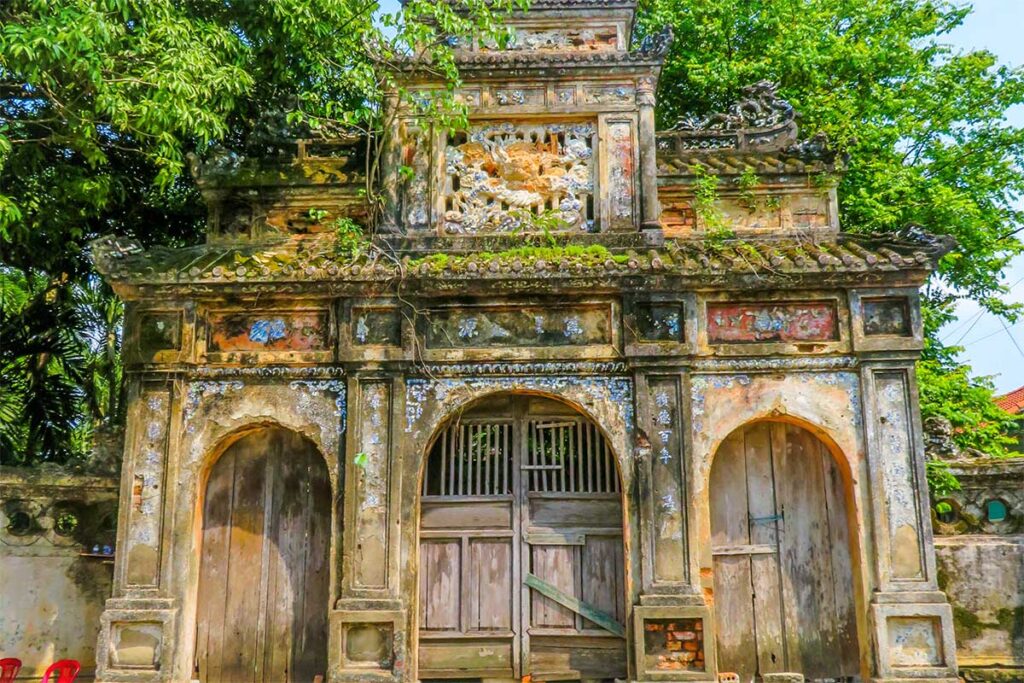
The visit begins at the palace’s three-arched main gate, blending Eastern and Western elements. You’ll notice porcelain mosaics featuring dragons, phoenixes, and other traditional motifs, alongside European-style columns and Roman-inspired design touches. It’s an eye-catching structure and a good introduction to the architectural mix you’ll see throughout the site.
2. Trung Lap Pavilion
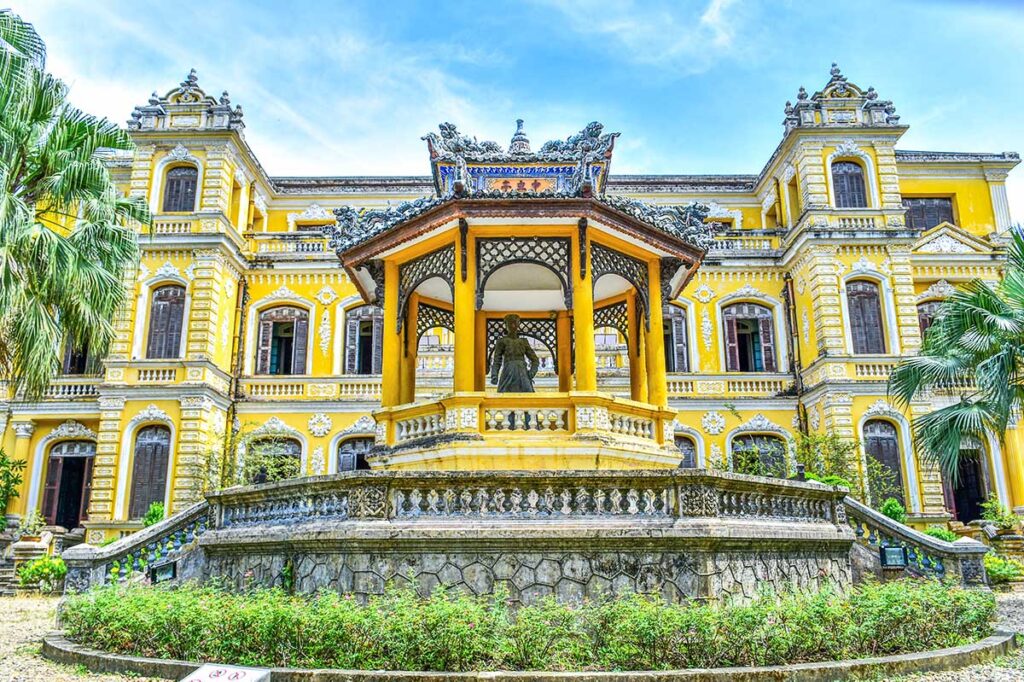
In the center of the courtyard stands a small octagonal pavilion raised slightly above the ground. This structure was built to house a bronze statue of Emperor Khai Dinh, crafted in life-size proportions. The roof features twelve embossed dragons, symbolizing power and direction. It’s a quick stop, but adds historical context to the palace grounds.
3. Khai Tuong Pavilion (Main Building)

The main building is a three-story European-style mansion, painted yellow with arched windows and floral details. This is the highlight of the palace and the only building you can enter. Built in a mix of Baroque and Art Nouveau styles, it once served as the private residence of Crown Prince Bao Dai.

Today, it’s been partially restored and functions like a small museum.
4. Interior frescoes and murals
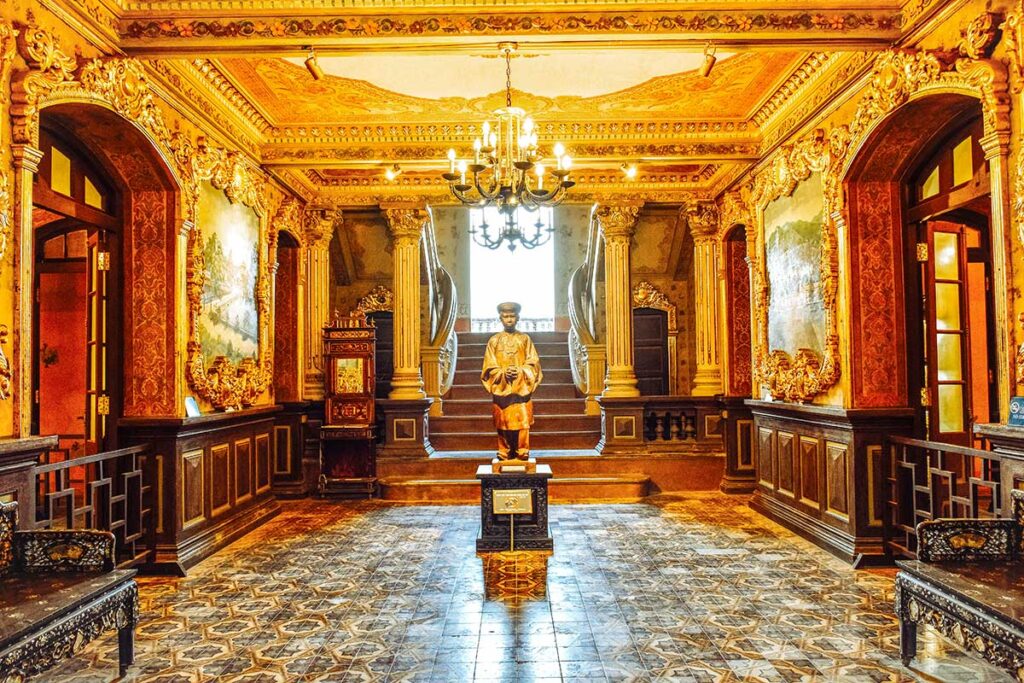
The inside of the pavilion is surprisingly ornate. Hand-painted murals line the walls and ceilings—depicting royal life, landscapes, and decorative floral patterns.
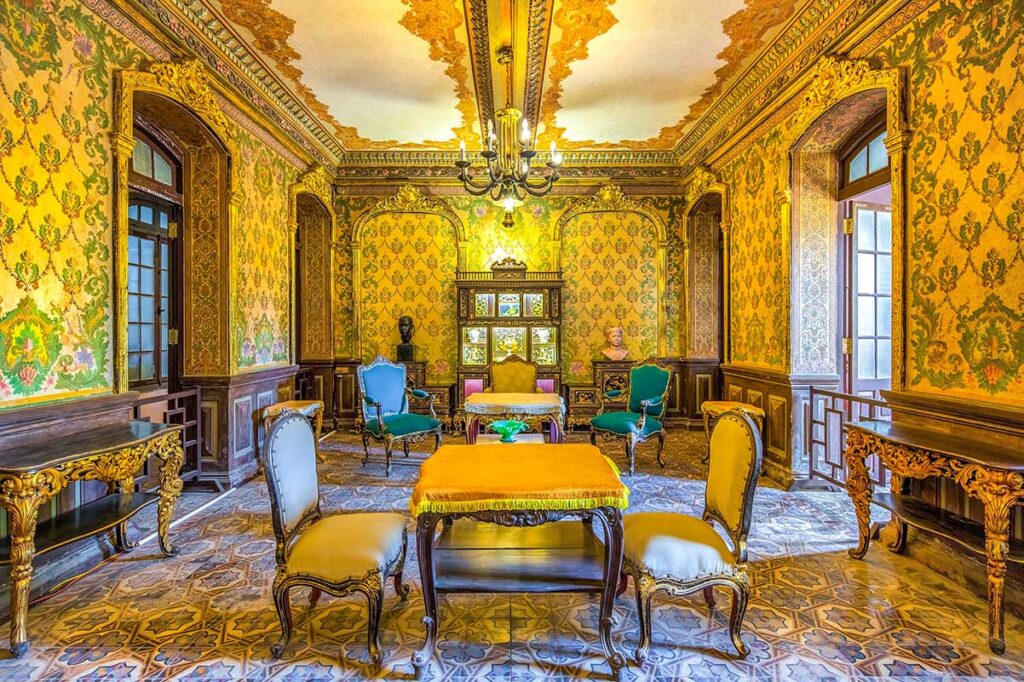
On the ground floor, look for a series of six large wall paintings showing the mausoleums of Nguyen emperors, starting with Gia Long. The artist is unknown, but the detail and preservation are impressive.
5. Grand staircase

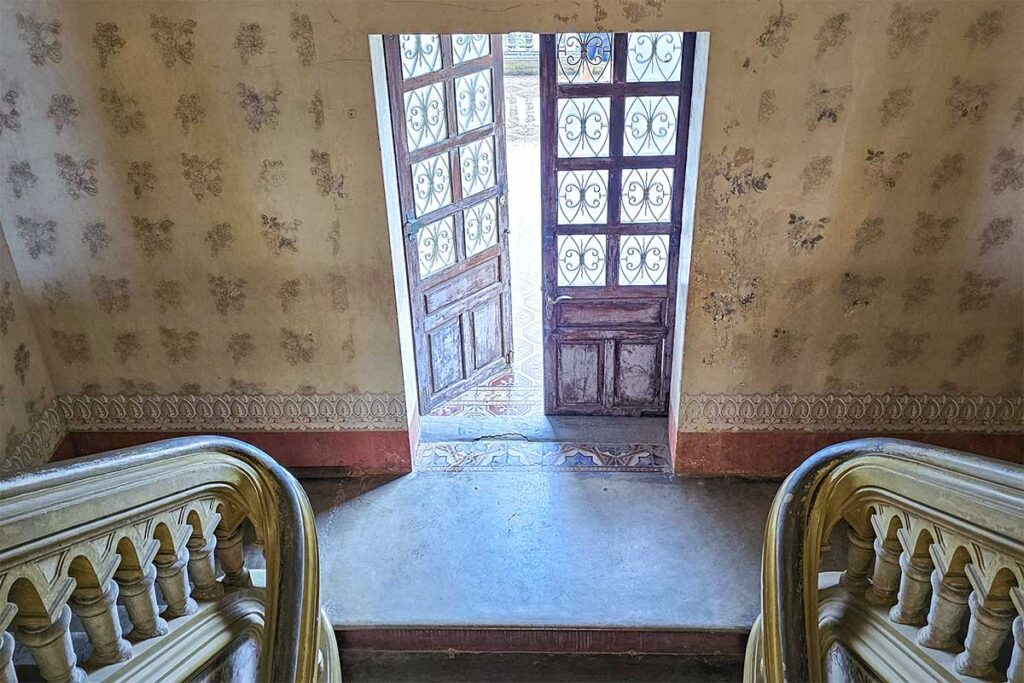
At the heart of the main hall is a curved staircase leading up to the upper floors. From the base, you can admire the painted ceiling dome above and the natural light filtering through the windows. It’s one of the palace’s most photogenic spots and often a favorite with visitors.
6. Courtyard and garden
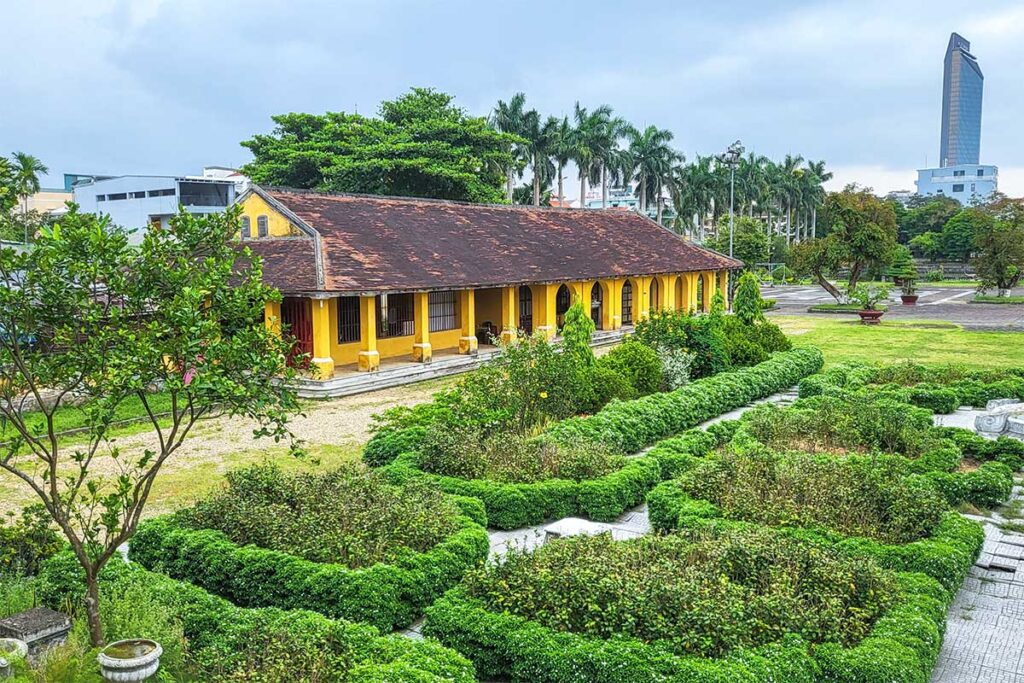
The space in front of the pavilion is a quiet, open courtyard, framed by old walls and greenery. While the original garden layout is no longer intact, the area still offers a peaceful atmosphere with plenty of space to take photos or sit and enjoy the view. Unlike many sites in Hue, it’s rarely crowded.
Visiting information
Location
- Address: 179B Phan Đình Phùng Street, Hue
An Dinh Palace is tucked away in a quiet residential neighborhood just south of the city center. It’s a peaceful spot that feels removed from the busier tourist areas, but still close enough to include in a half-day itinerary.
Opening hours
- Daily: 7:00 AM – 5:30 PM
Open every day, including weekends. Try to visit in the morning or late afternoon to avoid the heat and catch the best light indoors.
Entrance fee
- Adults: 50,000 VND
- Children under 12: Free (subject to change)
Tickets can be purchased at the small gate booth. Cash is preferred.
Visiting time
- Plan to spend around 30 to 45 minutes for a relaxed visit.
- Most of the complex is focused around a single building, so it’s easy to explore without rushing.
- You can comfortably combine it with other nearby cultural or religious sites in the same area.
How to get there
An Dinh Palace is about 2 km southwest of Hue’s Imperial City, which makes it quick to reach from most central hotels or sights.
It’s easy to get there by:
- Taxi or Grab – Around 30,000–50,000 VND depending on distance. This is the most convenient option.
- Motorbike – Very accessible if you’re renting. Parking is available right at the entrance.
- Bicycle – A pleasant ride if the weather’s cool; the roads are flat and not too busy.
- Walking – Doable from some areas like Tu Dam Pagoda or Phu Cam Cathedral, but less ideal in the midday heat.
Tip: Nearby sights to combine
While there’s nothing directly next to An Dinh Palace, several cultural and religious sites are located within a 2–3 km radius, making it easy to combine into a half-day trip around southern and central Hue:
- Nam Giao Esplanade – Historic imperial altar in a quiet pine forest, once used for royal offerings to Heaven and Earth (~5 mins by car)
- Tu Dam Pagoda – Peaceful Buddhist temple with a Bodhi tree and traditional architecture (~4 mins)
- Phu Cam Cathedral – A striking modern Catholic church with bold design and a quiet setting (~6 mins)
- Bao Quoc Temple – Lesser-visited Buddhist site with royal connections and a hilltop location (~7 mins)
- Dong Ba Market – Hue’s main traditional market, perfect for a local lunch, snacks, or souvenirs (~10 mins)
Bonus travel Tip: If you’re heading toward the tombs of Tu Duc or Khai Dinh later in the day, this area makes a great starting point for a slower cultural morning.
Is An Dinh Palace worth a visit?
If it’s your first time in Hue and you’re short on time, An Dinh Palace isn’t a must-see—the Imperial City and royal tombs like Tu Duc and Khai Dinh should be higher on your list. But if you’ve got a bit more time, or you’re interested in architecture and quieter spots, it’s definitely worth a stop.
It’s also a great place to visit on the way to or from the tombs, since it’s located between the city center and those more remote sites. While the tombs are bigger and more famous, An Dinh offers a totally different vibe—less crowded, smaller in scale, and with its own mix of European and Vietnamese design. It’s a nice change of pace, especially if you’re looking to see something off the usual tourist path.

